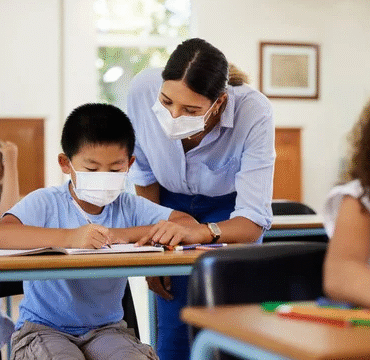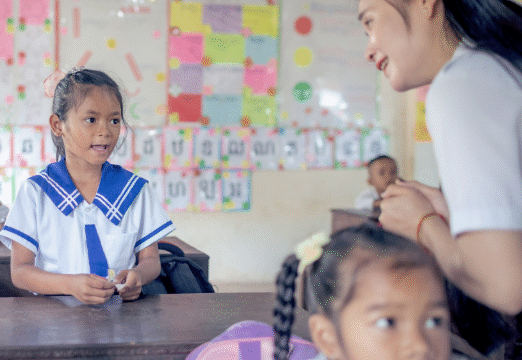Education has long been recognized as a powerful tool
for unlocking opportunities and shaping the future of
individuals and communities. Yet, one of the most basic
building blocks of learning—school supplies—is often taken for granted. For many families and children around the world, obtaining essential items such as notebooks, pencils, and backpacks can be a challenge. Ensuring access to school supplies for all is more than just a matter of convenience; it is a fundamental step toward creating equal learning opportunities and helping students thrive both academically and emotionally.
When we think about education, our minds often focus on classrooms, teachers, and lessons. But behind every successful student lies a foundation of resources that support learning. Imagine a child who arrives at school without a notebook to write in, or a pen to take notes with. These small items may seem insignificant to some, but they carry enormous weight in the daily experience of a student. Without them, participation in class becomes difficult, homework feels impossible, and self-confidence can decline. On the other hand, having the right tools gives children a sense of readiness and motivation, allowing them to focus on learning rather than worrying about what they lack.
The challenge of accessing school supplies is not confined to one country or region. In wealthier communities, the high cost of branded or specialized supplies can strain family budgets, particularly when there are multiple children in a household. In developing regions, the issue can be even more pressing, as poverty makes it hard to secure even the most basic materials. The result is an uneven playing field where some children can fully engage with their education while others fall behind through no fault of their own. This imbalance highlights the importance of collective efforts to bridge the gap.
Communities, nonprofits, and schools themselves have stepped in to address this need in creative ways. Local supply drives, often organized during the back-to-school season, gather donations from families and businesses to distribute among students who need them. Teachers frequently go above and beyond, using their own resources to ensure no child in their classroom feels left out. Charities and larger organizations have also created programs that distribute supplies on a wider scale, sometimes even pairing them with scholarships, mentorship, or meal support. Each of these initiatives plays a crucial role in reducing barriers and promoting fairness in education.
The benefits of ensuring access to school supplies extend far beyond the classroom. When children feel prepared and equipped, they are more likely to develop positive attitudes toward school. Having supplies encourages participation, helps foster creativity, and reduces stress. It also supports teachers by allowing them to conduct lessons smoothly without the added challenge of accommodating students who do not have the required materials. Over time, this collective sense of readiness contributes to higher engagement, better academic performance, and improved self-esteem among students.
Parents also experience relief when their children have access to necessary supplies. Education can already be a heavy financial burden, particularly when combined with other costs like uniforms, transportation, or technology. Knowing that their children are supported by community efforts or school programs helps ease this pressure. This, in turn, allows families to direct their resources to other essentials, strengthening the overall stability of the household. It becomes clear that the ripple effect of school supply access touches not only the students but entire families and communities.
Technology has introduced new dimensions to the concept of school supplies. In today’s world, having a device such as a tablet or laptop, along with reliable internet access, can be just as important as having pens and paper. This became especially evident during the global shift to remote learning, where the absence of digital tools created new challenges. While not every student requires high-end equipment, the availability of even basic technology can open doors to online resources, research, and collaboration. Expanding access to these modern learning tools is now part of the broader conversation about educational equity.
Addressing the issue of school supply access requires collaboration across many levels of society. Governments can play a role by funding programs that provide supplies directly to schools, ensuring that every student has what they need from day one. Businesses can contribute by sponsoring drives or donating surplus products. Communities can rally together by organizing volunteer programs or creating sharing networks where gently used supplies are given a second life. On an individual level, families and neighbors can support one another, reminding us that even small contributions can make a meaningful difference.
It is important to highlight that ensuring access to school supplies is not only about physical items but also about building dignity and confidence. Children who receive support should never feel singled out or embarrassed. Programs that distribute supplies often work hard to make the process inclusive and celebratory, framing it as a community effort rather than charity. This approach helps students see that they are supported and valued, which in turn encourages them to embrace learning with enthusiasm.
In the long run, investing in access to school supplies is an investment in society as a whole. Education shapes future leaders, innovators, and community members. By removing barriers to learning, we give every child a fair chance to reach their potential. A student who feels empowered with the right tools is more likely to stay engaged in school, pursue further studies, and contribute positively to their community. These outcomes strengthen economies, promote social harmony, and create cycles of opportunity that last for generations.
As individuals, it is worth considering how we can contribute to this cause. Donating extra supplies, volunteering at school events, or simply raising awareness can go a long way. Businesses can partner with schools or nonprofit organizations to sponsor students in need. Even schools themselves can adopt strategies that reduce the financial burden on families, such as communal supply sharing or bulk purchasing programs. Each action, no matter how small, brings us closer to a world where no child is held back because they lack the tools to learn.
Access to school supplies for all is a vision that reflects fairness, compassion, and the belief that every child deserves the chance to learn without unnecessary obstacles. It is not just about pencils and paper; it is about ensuring that the doors of education are truly open to everyone. By working together as communities, governments, and individuals, we can build an environment where students feel supported, confident, and ready to pursue their dreams. In doing so, we create not only better educational outcomes but also stronger, more resilient societies.






